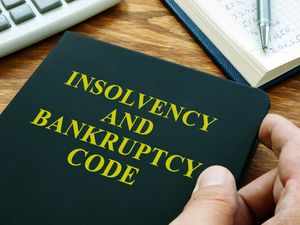 Getty Images
Getty ImagesTwo features of the regulatory regime have been central to the current malaise in India’s financial sector. First, until 2015, contrary to international best practice, RBI rules permitted banks to classify restructured loans as standard assets rather than downgrade them to non-performing status.
Second, until the Insolvency and Bankruptcy Code (IBC) came along in 2016, the process of exit for defaulting firms and recovery of loans from them was cumbersome, costly and protracted.
In good books
Fearful that recovery of loans in default would be partial and take a long time, bank managers preferred to restructure loans before they went into default. Under the rules, restructured loans retained their status as standard assets. The incentive to follow this practice was especially high in public sector banks (PSBs), since any write-downs on loans in the event of default and partial recovery carried the risk of attracting the attention of vigilance agencies. As a result, restructured loans with little prospect of full recovery piled up, especially on the books of PSBs.
Many unscrupulous promoters saw in this weakness of the system, an opportunity to accumulate personal wealth. They effectively transformed a part of the bank debt into personal equity. This act undermined their ability to service the debt further, but they knew that banks would have no option but to restructure the loan on more generous terms. Repeated iterations of this process gave rise to what came to be known as ever greening of loans.
Eventually, in 2015, RBI did catch up with this game and changed the regulation to force banks to reclassify restructured loans as non-performing assets (NPAs). That led to a quick deterioration of balance sheets of banks, especially of PSBs, which had accounted for disproportionately large volume of restructured loans. GoI was left with no option but to commit a gigantic Rs 2.1 trillion in 2017 for recapitalisation of PSBs. Fundamentally, this sum gave relief to corporations and banks despite their missteps. It amounted to more than one-fifth of all public welfare direct benefit transfers since 2013-14.
An even more damaging effect of the arduous pre-IBC regime was that it subverted the process of creative destruction by throwing sand in the wheels of market renewal. Difficulty of exit discouraged entry of new vibrant firms. Firms make new investments on the basis of certain market expectations. In case those expectations are not realised, they need to be able to exit. The more difficult such an exit, the more reluctant the investor. This blunting of competition from efficient potential entrants had the effect of propping up inefficient and uncompetitive incumbent firms.
Furthermore, the large inefficient corporations often recognised that GoI would view their protracted exit, during which the value of their assets would see deterioration, and paucity of new entrants as socially costly. Therefore, during a downturn, they could credibly argue that unless GoI rescued them, their entire sector and the wider economy would suffer. The threat of accompanying job losses sharpened this argument.
Luckily, IBC has now considerably speeded up the exit process. Backed by a 2017 amendment to the Banking Regulation Act, it has also empowered creditors to pursue defaulting promoters. The results, to date, have been extremely encouraging.
Jet lag
For example, in 2017-18, Jet Airways was among India’s largest players by passenger share in both the international and domestic civil aviation markets. But when it defaulted on its loans in 2019, creditors could speedily eject its powerful promoters. Moreover, despite its size, its exit created minimal market disruption. Other airlines stepped in to fill the supply gap and are also picking up its employees. Loan recovery by creditors is well under way.
Likewise, IBC has resulted in the entrenched promoters losing Bhushan Power and Steel Ltd (BPSL) and Essar Steel. JSW Steel and Arcelor-Mittal have respectively acquired these firms. BPSL and Essar creditors have recovered 41% and 92% of their loans, respectively.
According to ratings agency Crisil, during 2018-19, financial creditors recovered 42.8% of the Rs 2.53 trillion amount claimed under IBC. This represents a marked improvement over the dwindling pre-IBC recovery rates of 31%, 24%, 22% and 18% in 2010-11, 2011-12, 2012-13 and 2013-14 respectively. Critically, Crisil reported that the average time taken for resolution has declined from 3.5-4 years to 326 days for the 94 cases resolved under IBC as of March 31, 2019.
Given the new context, it is essential for GoI not to subvert competition by intervening on behalf of ailing corporations. When bankruptcy is swift, it does not result in the destruction of assets. Instead, it allows a more efficient buyer to acquire them at prices at which they can be deployed profitably.
What GoI needs to do is make IBC even speedier, more transparent and hazard-free. As an example, it is reported that after JSW Steel acquired BPSL, the Enforcement Directorate (ED) attached the firm’s assets against its claims on BPSL. Such overreach by government agencies has a chilling effect on all potential bankruptcy resolutions. It is reassuring that the Cabinet has recently approved an amendment to IBC protecting buyers of assets against such liabilities. Parliament must swiftly pass the amendment.
(Panagariya is professor of economics, Columbia University, US, and Mantri is managing director, Navam Capital)
Download The Economic Times News App to get Daily Market Updates & Live Business News.
Read More News on
Download The Economic Times News App to get Daily Market Updates & Live Business News.









 Get Unlimited Access to The Economic Times
Get Unlimited Access to The Economic Times
